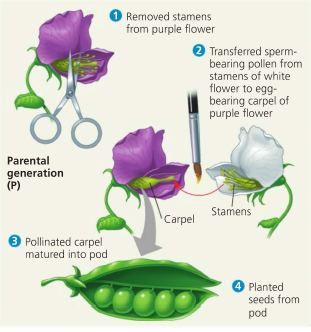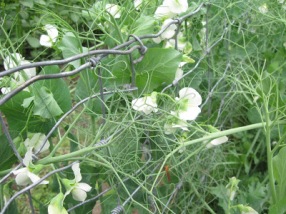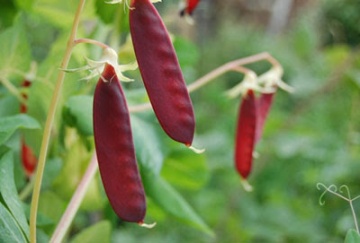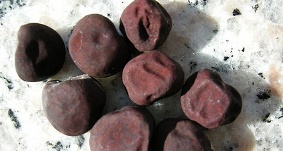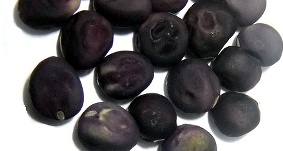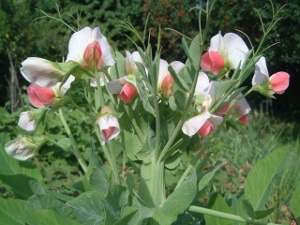…and discovering how interesting pea breeding can actually be…

Google’s logo showing a dihybrid cross, but failing to follow the law of independent assortment (yellow pods & yellow seeds are not linked), and also failing to show that yellow seeds are dominant. But, it does show the 3:1 ratio of green:yellow pods in the F2 generation.
After noticing that Google’s logo today was in honor of Gregor Mendel’s 189th Birthday, I decided to make a post about pea breeding. On first thought pea breeding doesn’t sound all that interesting. Even to people who are interested in plant breeding in general. I myself thought that Mendel had already worked with all the interesting traits found in peas out there, but i have found that i was wrong. I’m starting to find that the traits Mendel worked with are actually very neat in person, and the ones he didn’t know about are even more interesting.
The Google logo itself is actually a visual representation of Mendel’s experiment of crossing yellow podded peas (recessive) with that of green podded peas (dominant), but it also shows his other experiment of crossing yellow seeds with green seeds. Unfortunately it looks like Google’s logo is not following the law of independent assortment and is showing linkage between yellow pods and yellow seeds, which is incorrect. Yellow seeds are actually dominant, so Google fails in that regard. But, even so it illustrates the ratio of 3:1. In other words, in the F2 generation 3/4 of the offspring will be green-podded and 1/4 yellow podded.
The picture above shows a variety called “Golden Sweet” which remarkably has both the rare yellow-podded gene, but also the gene for constricted pods. After growing this variety for the first time here in my own garden, i can see why Mendel was so fascinated with pea traits at the time. I personally think his experiments were directly inspired by this unique variety of pea, which is suspected to have become close to extinction in Europe and the rest of the world, until it was accidentally rediscovered recently in a collection of seeds from India. It certainly is a pea with some interesting genetics.
I’ve only just started to experiment with crossing peas this year. While it sounds like it would be hard, it’s actually fairly easy. But, it really does help to have a tiny pair of scissors instead of an exacto knife or scalpel. The only hard part is that pea flowers are self fertile and self pollinating by nature, and you must catch the flowers very early to be able to cut off the immature pollen so you can use pollen from another plant. I really don’t know how Mendel did that in his day in age, but i applaud the man. Here are two links to pea breeding on Rebsie Fairholm’s blog.
How to breed your own garden peas
How to hybridise garden peas

Mendel worked with several different pea traits, and documented at least seven of those. Yellow-podded vs Green-podded, Yellow-seeded vs Green-seeded, Inflated Pods vs Constricted pods, Round seeds vs Wrinkled seeds, Tall vs Dwarf, flower position, and flower color.
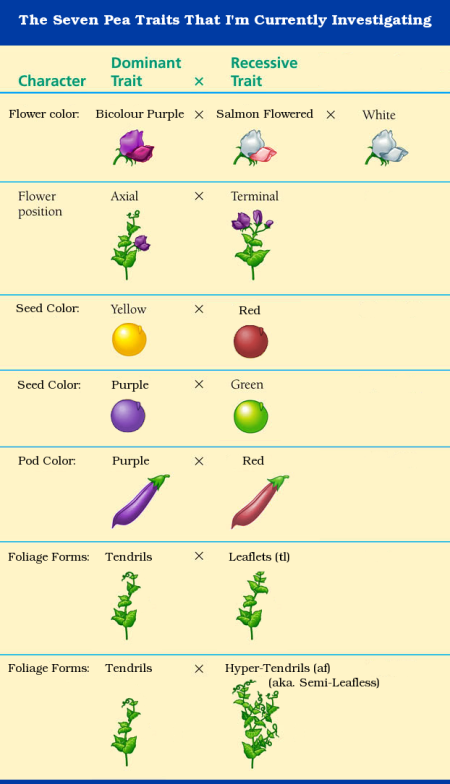
Several Pea Traits I’m Currently Researching (I’m actually researching more than seven)
Alan Kapuler of Oregon discovered a while back that if you outcross a pea called “Parsley Pea” which has an insane amount of leaflets on it’s tendrils, that you can get a pea that has hyper-tendrils and has twice the amount of tendrils and doesn’t require a trellis to support themselves.
Rebsie Fairholm from the U.K. discovered just a few years ago (2008) that when you cross a purple-podded pea with a yellow-podded pea you get a red-podded pea! How awesome is that!
I’m currently trying collect lots of pea varieties with rare and interesting traits, but one that is uniquely rare though is one called Biskopens. It is the only pea that i know of that has red seeds! Yeah, it’s a red-seeded pea!
This is a very rare variety i was lucky (and surprised) to get in a recent trade. I really look forward to growing out this variety next spring. Supposedly it also has purple pods. I have no idea what it’s origin is. I’m curious if it’s the same gene as the red Biskopens pea, but perhaps with a green seed underneath so maybe this one comes out purple? I’m just speculating at this point.
If you are still interested in all of this, then please feel free to visit my pea_breeding webpage to find out more detailed information about pea genetics and about Mendel’s work with peas (as well as and Rebsie’s red-podded pea). Or my recently updated webpage about the seven-ish unusual pea traits that i’m currently studying at http://biolumo.com/garden/peas.html.

